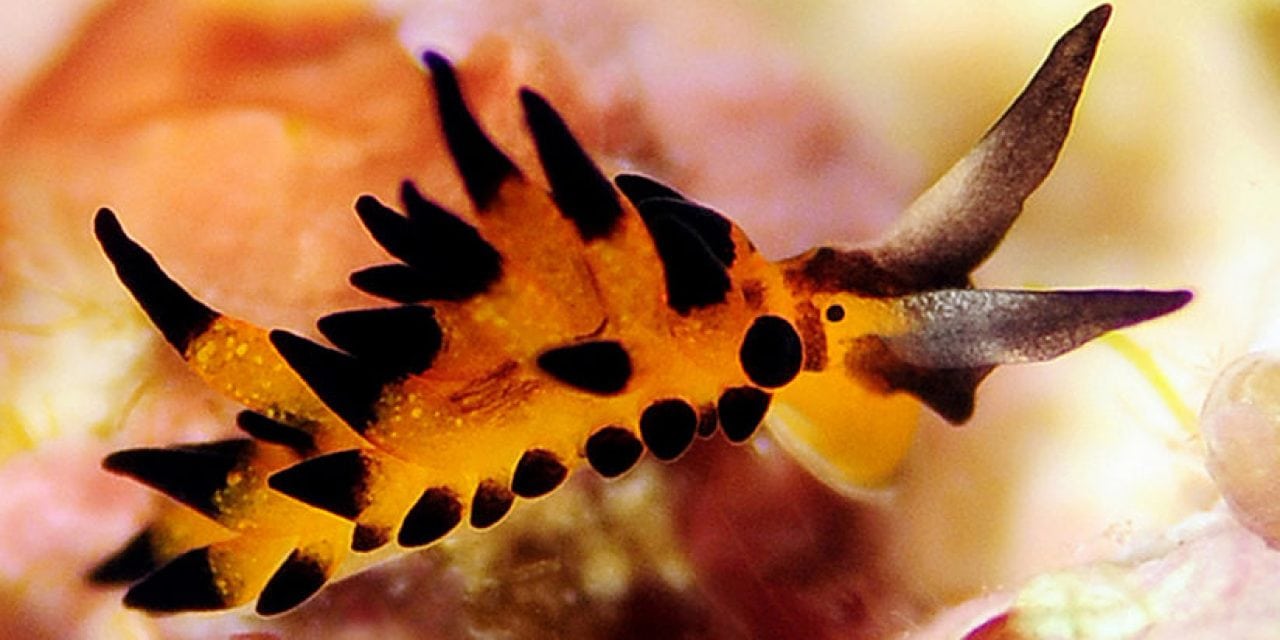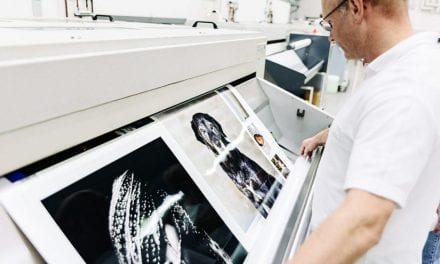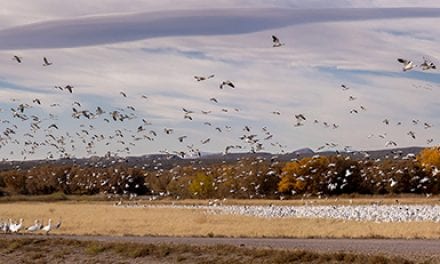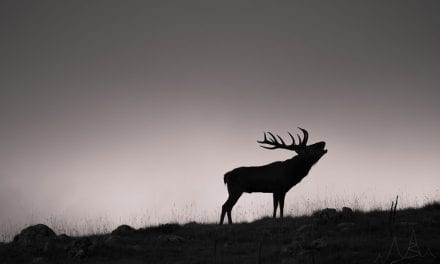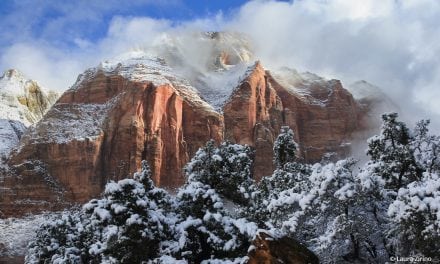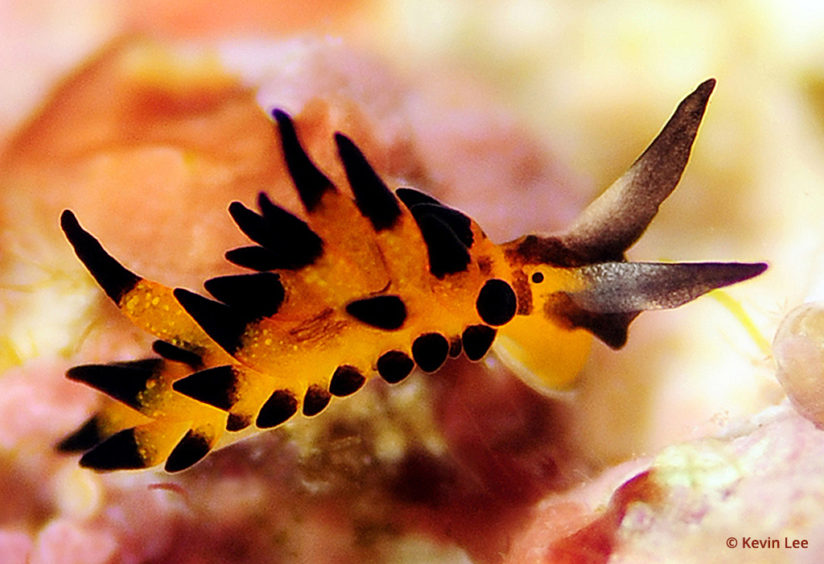
Some explorers have had mountains named after them. Some planets. Southern California-based underwater photographer Kevin Lee can boast of having a sea slug, Placida kevinleei, bear his name. And he is no less proud than his fellow adventurers. While Lee’s journeys have taken him to more than 40 countries, including multiple treks to Mt. Everest Base Camp and atop Mt. Kilimanjaro, it’s the world below sea level that has become his photographic focus. Though aesthetics are an important aspect of his explorations photographing marine biology, he strives to capture unique perspectives that are of use to marine biologists and other scientists who study the ocean’s smallest creatures.
Outdoor Photographer: Your underwater photography focuses on sea life that most of us have never heard of or are even able to pronounce. What are some of the most unusual species you’ve come across photographing marine biology?
Kevin Lee: It’s difficult to select any particular animal as the most unusual, as so many express odd behaviors and display interesting forms. For example, the windmill worm erects a circular lattice wheel and deposits a sticky substance between the spokes which catches food particles. Pelagic drifters seem like alien life forms. The polychaete worm, which can grow up to 10 feet long, is an ambush predator. At night it becomes active and patiently waits at the top of its burrow, jaws open to sense passing prey, which it swiftly snares with sharp, serrated jaws, yanking the hapless victim into its burrow for consumption. Photographing the worm is a hit-or-miss endeavor as it quickly retreats when approached by divers.
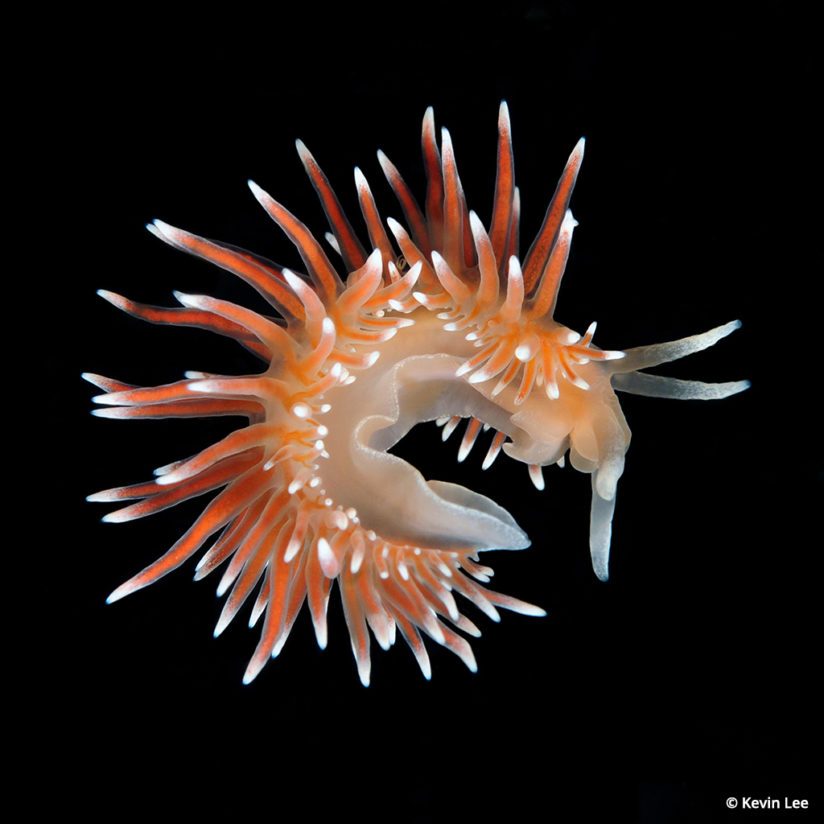
OP: Do you have a favorite species you like to get in front of your lens?
KL: My favorite photographic subjects are the nudibranchs, or sea slugs, which come in a multitude of colors, shapes and sizes. I have found them in the waters off of every continent, including Antarctica. Think of them as snails which have evolved to lose their heavy, cumbersome shells, thereby gaining mobility and freedom to hunt for food and mates. In place of their shells, they have evolved multifarious defensive mechanisms, from extreme camouflage mimicking the color and morphology of their food source to incorporating stinging nematocysts or toxic metabolites into their bodies.
OP: What’s your typical camera set up for photographing marine biology?
KL: I’m shooting with a Nikon D800 in a Sea & Sea housing. Water absorbs sunlight, so beyond about 10 feet colors begin to fade, starting with the warm colors, so I use two Sea & Sea YS-D2 strobes triggered by fiber optic cords to reproduce “true” colors. Some underwater photographers tote multiple camera rigs with different lenses, but that’s too cumbersome for me. The macro world fascinates me, so I rarely engage in wide-angle work. For every decent wide-angle image, I can shoot 100 interesting macro subjects. I use a 60mm lens with a 1.4x teleconverter. Outside the housing, I have a 10x wet diopter that flips over my lens port and magnifies tiny creatures, nearly invisible to the naked eye. Though TTL convertors are available, I shoot full manual. Underwater there is little need to adjust shutter speed for macro work.
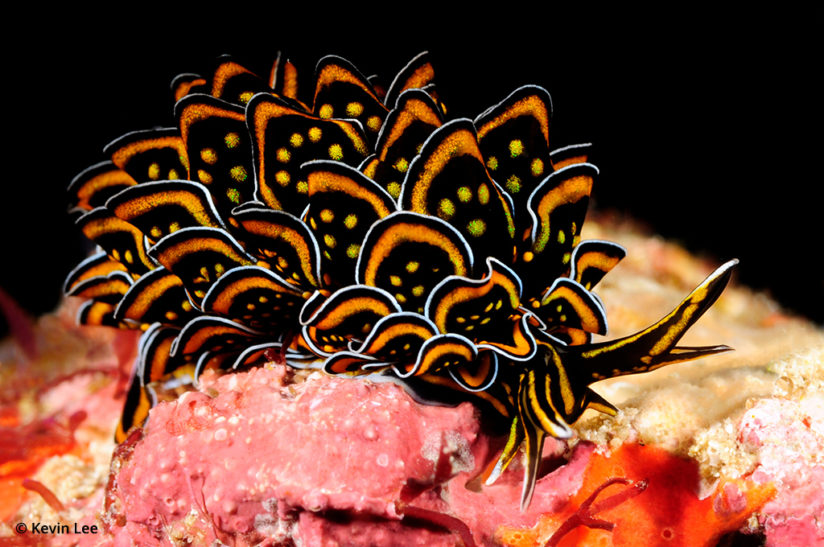
OP: Do you have a go-to shutter speed, aperture and ISO when working with strobes?
KL: Shutter speed is usually 1/250 of a second, and I rarely change that except if background exposure is desired. I seldom change my ISO setting unless I’m exposing for a distant object beyond the reach of my strobe lighting, in which case it’s no longer macro shooting, though I may be shooting through a macro lens. Normally I use ISO 200 for macro work. Only if a subject is beyond strobe range will I bump up the ISO to compensate, but it rarely exceeds 1,000 since the image quality degrades. I shoot full manual because it gives the greatest control and finesse to optimally illuminate subjects and bring out dimensional character, greater definition and texture.
For macro subjects, changes to aperture is the most common adjustment, particularly for depth of field. Next, I adjust the light intensity, with a quick turn of a knob on the strobes themselves, and/or move the position of the strobes for the particular lighting effect I want. Strobes emit a cone of light and I have found that the best lighting is achieved by using photons from the edge of that cone, not the harsh, flattening light of the center. Often, a single strobe provides the most interesting lighting effect as it mimics the single-source lighting of the sun. Fortunately, the digital world allows us nearly unlimited trial-and-error chances to make and correct shooting errors, with immediate feedback. This gives me an even greater appreciation of the masters of film photography.
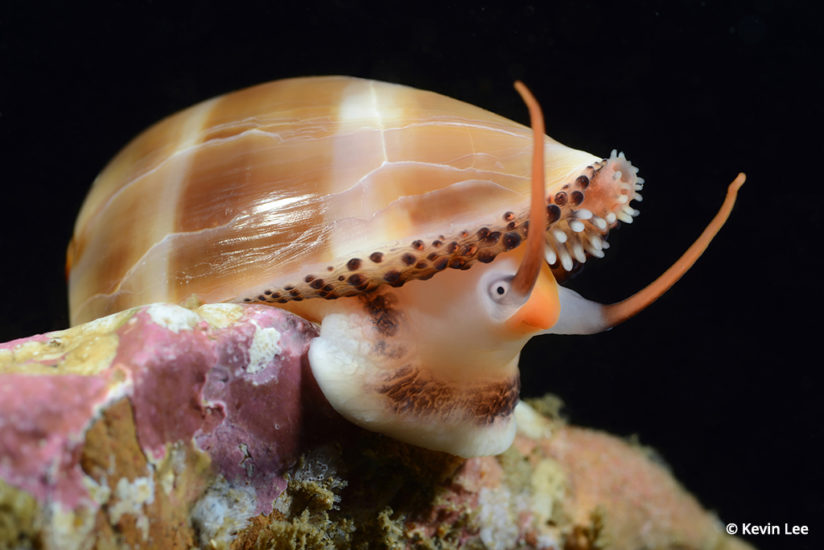
OP: One of the more unusual places you’ve dived recently was close to home, but a world away because of geopolitical issues.
KL: Diving in the Jardines de la Reina, “The Gardens of the Queen” in Cuba’s territorial waters, involved a lot of documentation, including a special visa, an affidavit of approved activity—in our case, under the category “education exchange” to study marine life—and a proof of medical insurance. Fortunately, I was guided through the labyrinth of regulations by noted photographer Richard Salas, as he regularly organizes and leads dive groups to the pristine waters of the Gardens of the Queen and other scuba destinations worldwide. It took two and half hours to clear customs, and the ordeal made the mojito taste all the more soothing.
To get there we took a five-hour bus ride to the port town of Jucaro, where we transited to a boat, which chugged the ocean for another five hours to the Tortuga, a floating hotel firmly anchored in the Jardines del la Reina archipelago, 50 miles away.
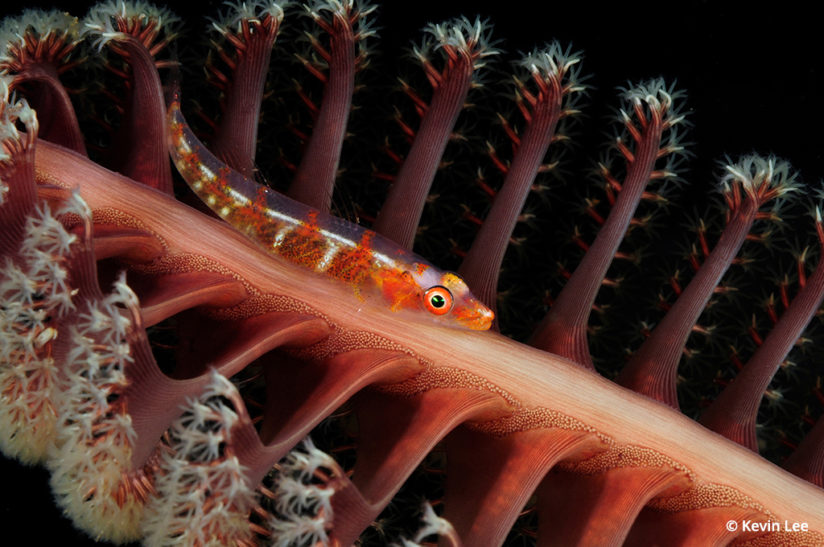
OP: What type of marine life did you encounter?
KL: Turtles, crocodiles and a wide array of colorful fish. The reefs of the Jardines del la Reina are interspersed by cays and mangroves all thriving with life. Sea fans, giant sponges and an abundance of corals can be seen on every dive. I found only three species of nudibranchs; the Caribbean is not noted for them in general.
The highlight for most divers were aggregations of sharks, predominantly Caribbean Reef and Silky. The water visibility was quite good, averaging a clean 80 to 100 feet. Fidel Castro was a diver-hunter and was instrumental in establishing the region as a marine reserve after a convincing conversation with Jacques Cousteau.
OP: Tell us about the most intense dives you’ve ever done.
KL: The most challenging dives have been in the polar regions. Even clad in a dry suit with dry gloves, the body’s extremities chill rapidly. Hands are the first to succumb to the biting cold, and numbing pain increases with each passing minute, making it difficult and cumbersome to work camera equipment. Then the feet start rebelling at the discomfort of being immersed in freezing cold water.
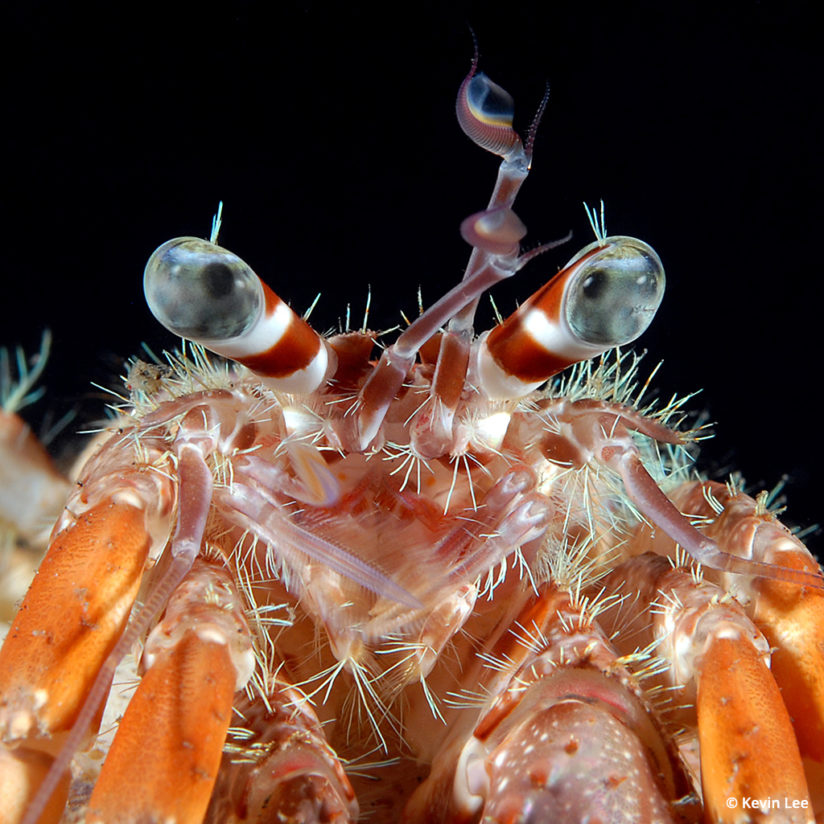
One dive in the Arctic, way above Norway, is the most memorable. My buddy Jeff and I were engrossed in collecting echinoderms for the Natural History Museum of Los Angeles, we had the requisite Norwegian permits and were covered with a thick carpet of kelp. As I breathed down my tank to 500 psi, I decided to head for more shallow water and indicated my intention to Jeff, who gave me the OK sign. I followed the steep contour of the rocky slope up to 15 feet, all the while still searching for echinoderms and opisthobranchs.
With my safety stop completed, I looked around to find a suitable place to surface but was stunned to see a massive sheet of ice, 25 feet deep and extending as far as I could see in both directions, moving toward me. With my air reserve depleted to 200 psi, it was not an inviting option to duck under the ice to try and swim out from under the huge ice floe and risk running out of air. But it was perilous to stay put as the monstrous ice would crush me against the vertical rocky wall. I decided to surface and could see Henrick, our divemaster, alone in our Zodiac, about 100 yards down current, frantically trying to push the ice away with the craft, though it made no impact against the inertia of the football field-sized ice sheet. Just then, the ice hit an outcropping of rocks, sending chunks of ice showering upward. This momentarily arrested the movement of the ice and gave me a tiny window to fin like hell and scramble onto the Zodiac, which zipped away just in time to avoid the crushing ice. Thankfully, Jeff appeared on the opposite, safe side of the ice floe, and we picked him up.
OP: How did you initially get into diving, and what’s the key to becoming a successful photographer working below sea level?
KL: While working as a consultant in the food industry, an associate, an ice cream formulation expert who was also a certified NAUI scuba instructor, asked if I’d like to learn how to scuba dive. I had told him about my love of outdoor activities. I was too busy to participate in a group lesson, so he offered private lessons at my own pace and schedule. After passing the written test and executing some pool sessions, we headed to the ocean for my first beach dive, off Laguna Beach.
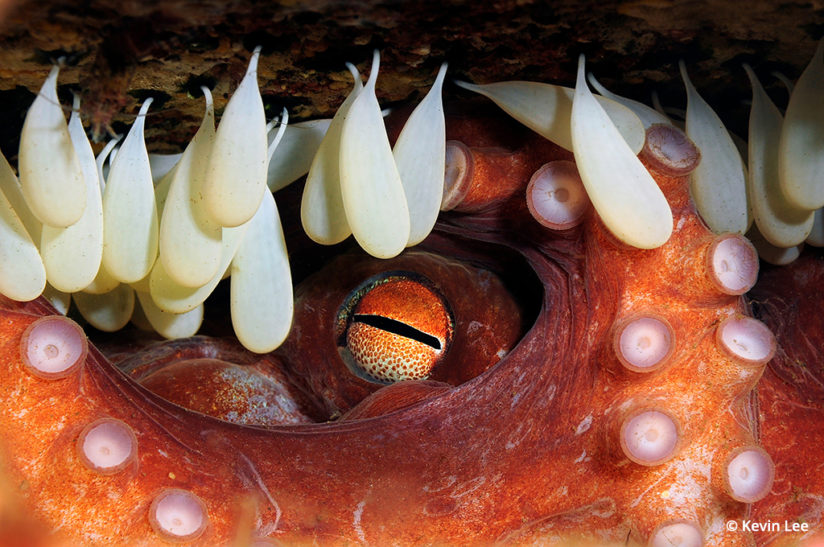
The experience was thrilling, akin to visiting a new world, with so many unusual marine creatures. As a newbie, due to the excitement and stresses of being underwater, my bottom time was limited to about 20 minutes. Now, after spending nearly 2,000 hours underwater all over the world, I can breathe underwater for about two hours using the same air tank. So, the key to being a good underwater photographer is to first be a proficient scuba diver.
Then you need to adjust to a watery world where visibility can be low, pesky surge can move you and your subject to and fro—especially when they’re as small as the ones I focus on—and particulates in the water can cause unsightly backscatter in an otherwise good image. But meeting the challenges, especially when trying to locate and document tiny creatures, is part of this big adventure.
See more of Kevin Lee’s work at diverkevin.com.
The post Denizen Of The Deep appeared first on Outdoor Photographer.

